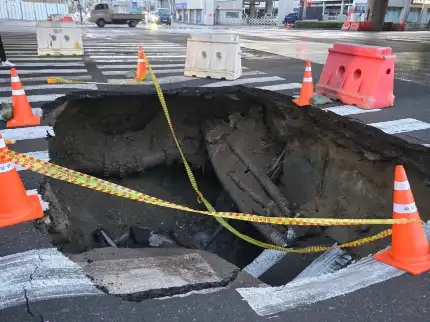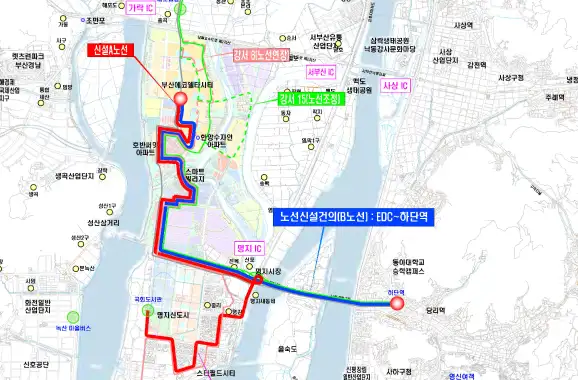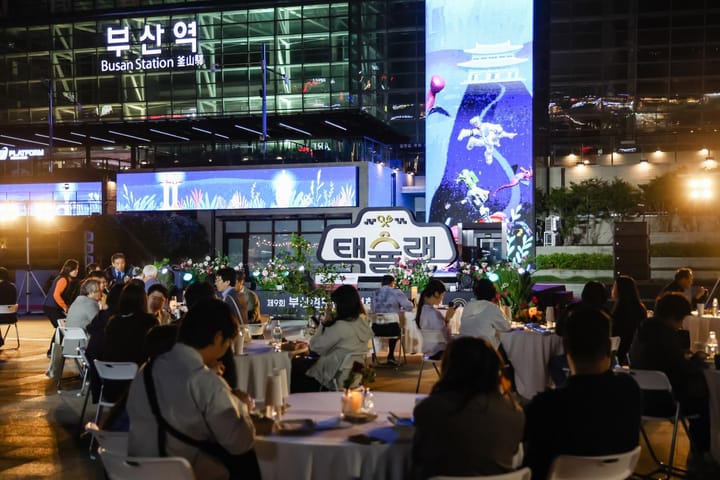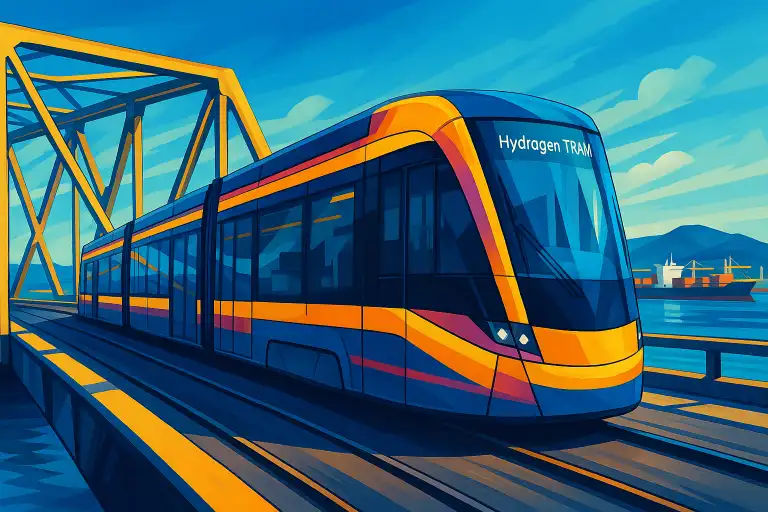New Sinkhole Disrupts Busan Subway Project, Raising Safety Concerns
A growing number of sinkholes near the Hadan–Sasang subway construction site are raising concerns about Busan’s broader underground transit strategy. As new projects like the Hadan–Noksan line and BuTX move forward, questions mount.

Busan, South Korea – Busan’s westward expansion of its subway network has long been promoted as a necessary investment in public infrastructure, promising faster transit, improved regional equity, and urban regeneration. A series of sinkholes appearing near an active subway construction site in western Busan has reignited concerns over the city’s underground infrastructure projects. Most recently, a large sinkhole formed in Sasang District, adjacent to the ongoing Hadan–Sasang subway line, prompting lane closures and emergency safety measures.
This is not an isolated incident. Over the past two years, at least six sinkholes and ground collapses have occurred near the same construction zone, with one dramatic episode in 2023 where two trucks plunged into an eight-meter-deep crater. The growing frequency of such events raises pressing questions: Are Busan’s underground rail ambitions structurally sound? Is the city prepared to manage the geological risks it continues to excavate into?
The Hadan–Sasang Line, first proposed in 2010 and approved in 2013, began construction in 2015 with a targeted opening date of 2021. That timeline has since shifted multiple times. As of now, the line is not expected to open until late 2026, five years behind schedule.
Originally intended to connect Busan Metro Lines 1 and 2 through the city’s less-developed western districts, the project was seen as a vital link for commuters and a catalyst for local development. But years of delays — caused by environmental disputes, design revisions, and repeated ground safety incidents — have cast doubt on the project’s continued relevance.
Even more troubling is that the Hadan–Sasang line passes through geologically vulnerable terrain. The area is composed largely of alluvial and reclaimed soils, weak in load-bearing capacity and highly sensitive to groundwater fluctuations. The repeated subsidence in this corridor is not only slowing progress but also calling into question whether the line’s route was appropriately planned from the start.
Busan’s geological profile poses unique engineering challenges. Much of the city was built along coastlines and riverbeds, with rapid post-war development often prioritizing speed over soil stability. Key districts like Sasang, Hadan, Noksan, and even Busan Station sit on artificial or sediment-heavy ground.
This weak substructure is especially vulnerable to collapse under the stress of subway tunneling. Construction can alter underground water flows, increase vibration, and destabilize surrounding materials. In areas with aging drainage and sewage systems, which often leak or corrode, the soil is further eroded from below — creating the perfect conditions for sinkholes.
Despite these risks, Busan continues to pursue an ambitious agenda of underground development. What’s lacking, critics argue, is a coordinated and data-driven master plan for the city’s subsurface environment.
Adding fuel to the fire is the Hadan–Noksan subway line, a proposed extension intended to link the southern industrial belt to existing metro lines. Although construction has not yet begun, the proposed route passes through zones geologically similar to those of the troubled Sasang–Hadan line.
Residents and urban planners alike fear that the same mistakes may be repeated. “If it’s already known that these areas are geologically unstable, why continue expanding the same construction model into them?” notes one expert in urban geotechnics. “This is no longer a case of unexpected consequences. It’s a pattern.”
The fact that the Hadan–Noksan line is still in its planning phase offers an opportunity: a chance to reassess. But whether the city will take that opportunity seriously remains uncertain.
Perhaps the most ambitious — and potentially most problematic — future project is BuTX (Busan Train eXpress), a proposed high-speed underground rail line that would connect the city center to Gadeokdo New International Airport, which is currently still in the planning stages.
BuTX is expected to pass through Hadan Station and Busan Station, both areas already marked by soft ground and structural vulnerability. Notably, Busan Station is built on reclaimed harbor land, making it especially sensitive to underground disturbance. Unlike regular subway lines, BuTX will require deeper and wider tunnels, applying far greater pressure on surrounding soils.
This raises the stakes considerably. If even slow-moving subway lines have triggered collapses in these zones, what will happen when high-speed rail is introduced?
For a city so focused on underground infrastructure, Busan surprisingly lacks a comprehensive subsurface development strategy. Above ground, zoning laws and land-use plans guide urban growth. Below ground, however, projects are often developed in silos, with little coordination between transportation, waterworks, and energy infrastructure.
This fragmented approach can create costly, dangerous overlaps — like drilling through old pipelines, or undermining unreinforced foundations. Other global cities have adopted integrated underground space management systems, mapping all subterranean layers to guide safe, efficient development.
So far, Busan has only partially implemented such systems, relying instead on post-incident investigations and project-specific assessments. As one urban planner noted, “It’s like navigating with your eyes closed — until you hit something.”
The problems facing Busan’s underground projects are not merely technical — they are structural, political, and philosophical. The city must decide whether it wants to build with the ground or fight against it.
Sinkholes near the Sasang–Hadan line are not accidents. They are warnings.
Plans like the Hadan–Noksan line and BuTX offer a chance to learn from those warnings — but only if the city is willing to confront hard truths about its terrain, its tools, and its transit model.
As Busan moves toward a future built underground, it must also build something else: a foundation of foresight.



Comments ()